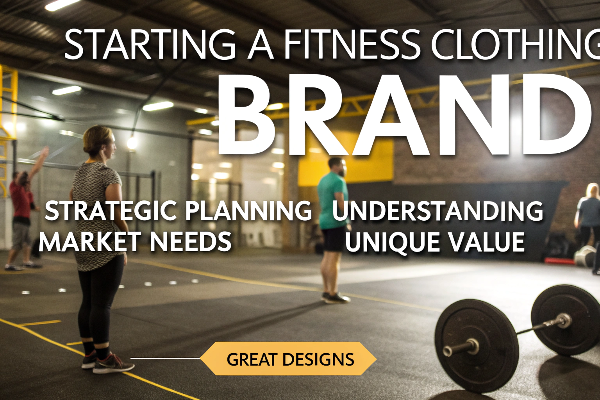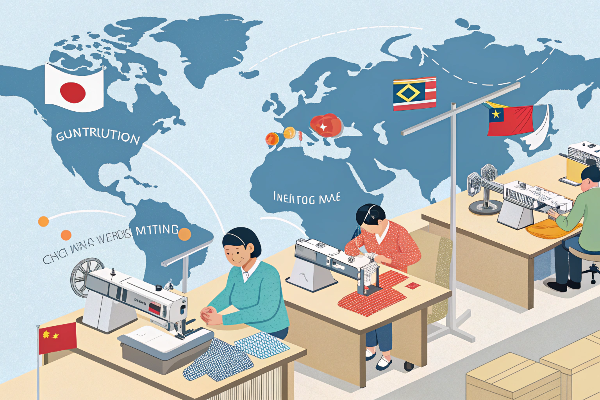Struggling to know exactly where your designer clothes originate? Not knowing this can lead to quality issues, higher costs, or delays that affect your brand’s reputation.
Most designer clothes are made in China, Vietnam, Bangladesh, and Italy. China is particularly prominent due to extensive production capacity, experienced workforce, and competitive pricing in apparel manufacturing.

But knowing manufacturing locations alone isn’t enough. You also need to understand how to effectively interact and communicate your needs clearly to clothing manufacturers. Let’s explore this in detail.
Table of Contents
- What do you send to a clothing manufacturer?
- How do I talk to manufacturers?
- How do I reach out to a manufacturer?
- Conclusion
What do you send to a clothing manufacturer?
Not sure what information to send your manufacturer? If your instructions aren’t clear, your final products could end up wrong, causing costly delays and returns.
When working with a clothing manufacturer, you should provide a detailed tech pack. This includes design sketches, fabric type, measurements, sizing, color references, trim details, quantity, and expected timelines. Clear instructions ensure accurate production.

A tech pack is like a detailed blueprint for making your clothes. Over time, I’ve found that manufacturers rely heavily on this document to avoid mistakes. Here’s a breakdown of what to include:
Essential Parts of a Tech Pack:
| Section | What You Need to Include |
|---|---|
| Design Sketches | Clear visuals (front, back, sides) of your garment. |
| Fabric Specifications | Composition, weight, texture, and weave. |
| Measurements | Detailed size charts for all your product sizes. |
| Color Information | Exact Pantone color references to ensure accuracy. |
| Trims & Accessories | Detailed notes on buttons, zippers, labels, and tags. |
| Quantity & Delivery | Clear quantity breakdowns by size and color, plus deadlines. |
For instance, Sarah Williams, a UK-based client of mine, once faced issues because her tech pack lacked specific fabric weight details. She ordered high-quality sportswear, but the factory used lighter fabric, thinking it was suitable. This led to returns and delayed sales. Now, Sarah and I always specify details like "260gsm polyester-elastane fabric," preventing any misunderstanding.
How do I talk to manufacturers?
Worried about communicating effectively with your clothing manufacturer? Miscommunication can lead to production errors, costly mistakes, and frustration on both sides.
To communicate effectively with manufacturers, use clear and simple language, confirm all important points in writing, ask precise questions, and follow up consistently. Written records ensure clarity and prevent misunderstandings.
Clear communication is crucial in manufacturing. Sarah often works with factories in China and Bangladesh, and we’ve learned how crucial precise and professional communication is. Here are practical tips I use daily:
Tips for Clear Manufacturer Communication:
| Communication Tips | How it Helps Your Business |
|---|---|
| Simple Language | Ensures easy understanding and fewer errors. |
| Written Confirmations | Provides proof and prevents confusion. |
| Specific Questions | Reduces misunderstandings and clarifies details upfront. |
| Regular Updates | Helps you monitor progress and fix issues quickly. |
| Use of Visuals | Makes complex instructions easy to understand instantly. |
When Sarah first started ordering customized hoodies, there was confusion around her logo placement requests. Initially, our explanations were only textual. This caused misinterpretation. To fix this, we started sending visual mock-ups clearly showing where logos should be placed on garments. After adopting visuals, mistakes dropped significantly, and both sides felt more confident.
How do I reach out to a manufacturer?
Unsure how to approach a new clothing manufacturer? A poorly structured first contact can harm your chances of forming a successful partnership.
You should first contact manufacturers with a clear, professional, and concise email. Include your brand introduction, specific product requirements, quantities, budgets, expected timelines, and ask directly for quotes, samples, or further details.
The first time Sarah contacted clothing factories, she felt unsure about how to start. We realized a simple, structured email works best. Here’s a clear template you can use:
Introductory Email Structure:
| Part of Email | What You Should Write |
|---|---|
| Brief Introduction | Your name, brand name, location, and brief business overview. |
| Product Needs | Clear and concise description of clothing types needed. |
| Specifications | Fabric, style, sizing, custom logos, and color details. |
| Quantities | Initial order quantity and future scaling potential. |
| Budget | Budget range or ask directly for competitive pricing. |
| Timelines | Sample deadlines and desired production timelines. |
| Next Steps | Request a product catalog, price quotes, or samples explicitly. |
For instance, Sarah introduced herself clearly: “I’m Sarah Williams, owner of a UK-based retail brand specializing in sportswear.” She mentioned her needs explicitly: “Looking for high-quality sportswear made from moisture-wicking fabric, with custom logo printing.” Her precise instructions helped factories respond quickly and accurately.
Following up after your initial email is just as important. Factories get many inquiries. Sarah always sets reminders to politely check back after three days if she hasn’t heard anything. Consistent follow-ups indicate seriousness and help you find reliable partners faster.
Conclusion
Knowing where designer clothing is made and how to effectively communicate with manufacturers helps ensure quality, minimize mistakes, and build successful partnerships for your brand’s growth.


